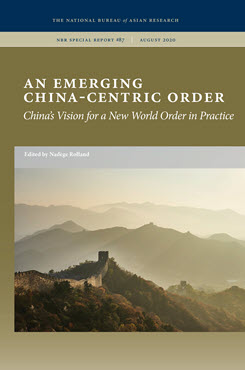NBR Special Report no. 87
Chinese Strategy and South Korea
This essay evaluates both the role of South Korea within Xi Jinping’s diplomatic strategy and the country’s position in Chinese think tank rhetoric.
Executive Summary
MAIN ARGUMENT
Chinese strategy toward the Republic of Korea (ROK) has not undergone wholesale transformation under Xi’s direction, but it has shown signs of being more assertive. Chinese pressure around the deployment of the Terminal High Altitude Area Defense (THAAD) system was a blunt and coercive instrument. Despite the turbulence over armaments, Beijing has opened up a relatively burgeoning relationship with Seoul, and successive South Korean leaders have expended much energy on cultivating ties with Xi. His signature initiatives—the Belt and Road Initiative (BRI) and the Asian Infrastructure Investment Bank (AIIB)—have received a relatively warm, if somewhat vague, welcome in Seoul. This is in part because South Korean leaders can envision BRI ultimately as a driver for the further enmeshment of North Korea into the region. In many cases, however, the new rhetoric from Chinese leaders and scholars mirrors old intentions, and South Korea will remain a relatively hard target for Chinese influence and intimidation efforts.
POLICY IMPLICATIONS
- Chinese shifts in policy toward South Korea are largely geared toward weakening the U.S.-ROK security alliance. Discussions around the alliance should recognize that it is not purely North Korea that stands to gain from friction between Washington and Seoul.
- South Korea has tried to occupy a middle ground whereby Chinese initiatives such as BRI and AIIB are welcomed but not seen as a means of turning away from the U.S. However, South Korean participation in these frameworks could form the cornerstone of a more vigorous rebalancing of the country’s trade and security relationships. China’s BRI strategy toward the Korean Peninsula has been more successful in the South than in the ostensible client state of the North.
- South Korea’s “middle power” status coexists uneasily with its large trade relationship with China. Bringing South Korea into a coalition of countries that are free of interaction with Huawei would be difficult given the profitable existence of supply chains of technical components between China and the ROK.
Adam Cathcart is a Lecturer in Chinese history at the University of Leeds and Editor of the European Journal of Korean Studies.



